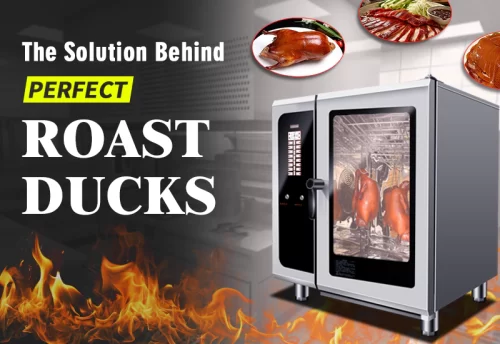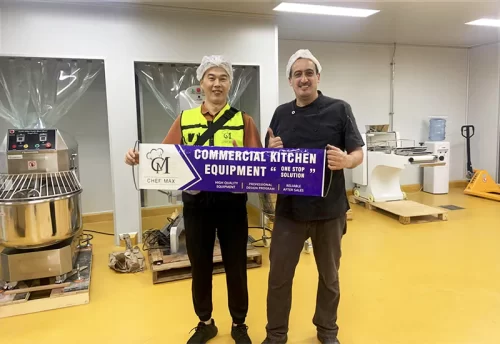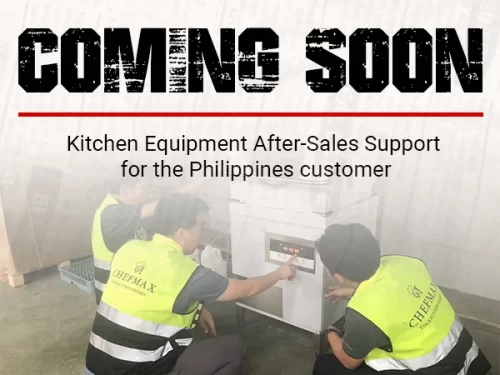How to Clean Your Commercial Griddle?
Are you looking for complete commercial griddle cleaning after frying eggs, meats and vegetables to perfection? Proper cleaning is important for both extending the life of your equipment and maintaining the flavor of your food, and Chefmax offers flat-top grill cleaning and maintenance methods to help you keep your equipment’s top smooth and tidy.
The importance of cleaning commercial griddle
Cleaning the grill is critical to your business. After a period of use, you may find that the panels begin to darken and tend to stick to the food, resulting in some burnt pieces remaining.
During busy business hours, chefs may not have the time to deep clean these pieces, which can have a significant impact on the taste of the dish and customer satisfaction. Long-term deposits of grease and impurities can form a layer on the surface of the flat-top grill that is difficult to remove, making it difficult for heat to transfer and for food to stick, all due to a lack of thorough cleaning and maintenance.
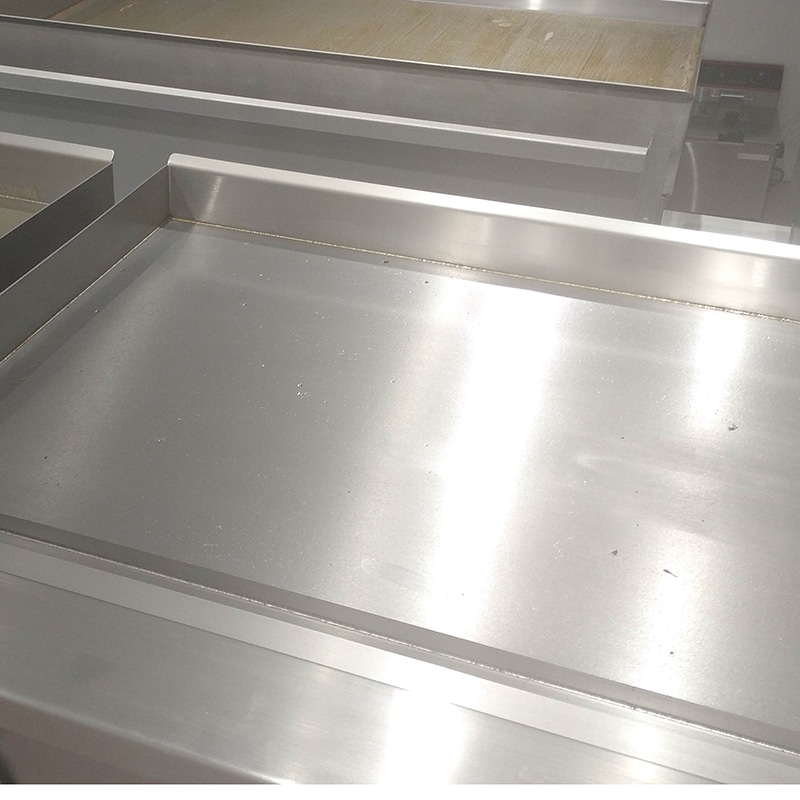
How often do I need to clean griddle?
Depending on how often you use it, it should be cleaned briefly at the end of each cooking session and deep cleaned and serviced a week apart, or every two weeks for less frequent use.
Complete deep cleaning steps
The next deep cleaning steps to be shared will effectively maintain your commercial grill, and you should perform these actions once a week.
1. Turn off the power or air valve and wait for it to cool down
Turning off the power or air valve completely is an important step that will keep the cleaning process safe.
You need to use a scraper to scrape off the burnt debris and other impurities from the panel before the temperature drops, when the debris and grease have not completely solidified on the panel, it is easier to handle.
Be sure not to use tools that are too hard and sharp or wire balls, which are likely to damage the surface. A baking spatula is the best choice. You can easily scrape the grease and crumbs into the crumb tray and dump them.
(Please do not use cold water rinses to quickly lower the temperature, as this can cause the sheet to become less tough and prone to cracking.)
2. Use cleaner to clean the panel
You should use a soft cloth dipped in diluted non-corrosive cleaner to wipe the commercial griddle panel, spray a suitable amount of water to make the cleaner foam, if there is still no loose debris, you can soak it for a short time and then try to clean it again (don’t soak it for too long, 3-5 minutes will do). A good quality cleaner will quickly loosen the carbonized surface.
3. Rinse and dry
Use room temperature water to rinse off the cleaning agent and impurities, taking care to dump the water from the grease drawer in time to prevent them from spilling inside the unit or staining the floor.
After this, use a dry towel or kitchen paper to dry the surface completely, and do the same for the grease drawer.
4. Apply a thin layer of cooking oil
Use a clean towel dipped in a small amount of cooking oil on the surface of the commercial griddle, this step will isolate the surface of the grill from the air and reduce the risk of oxidation and rust, but also polish the surface. If used frequently, only a layer of cooking oil is needed. If it needs to be left for a long time, it needs to be coated with special maintenance grease and covered with items such as plastic film and dust cloth to isolate the air.

Other maintenance
The above 4 steps are deep cleaning methods according to the actual situation. Simple cleaning after daily business can omit the step of using detergent, but you still need to use warm water to wash the panel clean, dry and grease it. In addition, you should check the equipment regularly and clean other areas to prolong the service life.
1. Season the panel
After cleaning and drying, heat the commercial griddle pan to about 160°C (320°F), stop running and wait for it to cool down. After the surface stops burning, apply a small amount of vegetable oil with a high smoke point evenly (do not choose corn oil, it has a high sugar content and may smoke or burn quickly), after that re-run the appliance and raise the temperature to 160°C. After the grease starts smoking, turn off the grill pan and after it cools down Wipe off the excess grease, which completes a seasoning. Repeat the procedure 1-2 times for better results.
This helps to maintain the baking pan, forming a protective layer of grease on its surface, making it less likely to stick to food and less likely to rust, so if this is your first time using a baking pan, it is highly recommended to use this method for initial maintenance.
Clean the equipment casing
Dip a soft cloth into the cleaner, then wash with warm water and finally wipe the equipment clean with a dry cloth. Be careful not to use chlorine cleaners and acid cleaners together, or let the residue of the two cleaners have contact, because the combination of acid and chlorine can produce harmful gases.
In addition, also do not use steel wool scrubbing highly polished stainless steel surface, easy to leave traces, after a day of use to clean in time, otherwise the stainless steel surface will be dull.
Other types of grills
1. Cleaning volcanic stone or cast iron surfaces
In addition to the smooth stainless steel or chrome-plated panels of the commercial griddle, other types of streaky surfaces are a little more laborious to clean because their bumpy surfaces can hide more grease and carbonized debris.
But the good news is that the latter are stronger and you can disassemble them, soften the debris with soapy water and detergent, scrub the grease and stains with a stiff wire brush and brass brush (don’t ignore the dirt on the bottom), rinse off, dry and apply cooking oil.
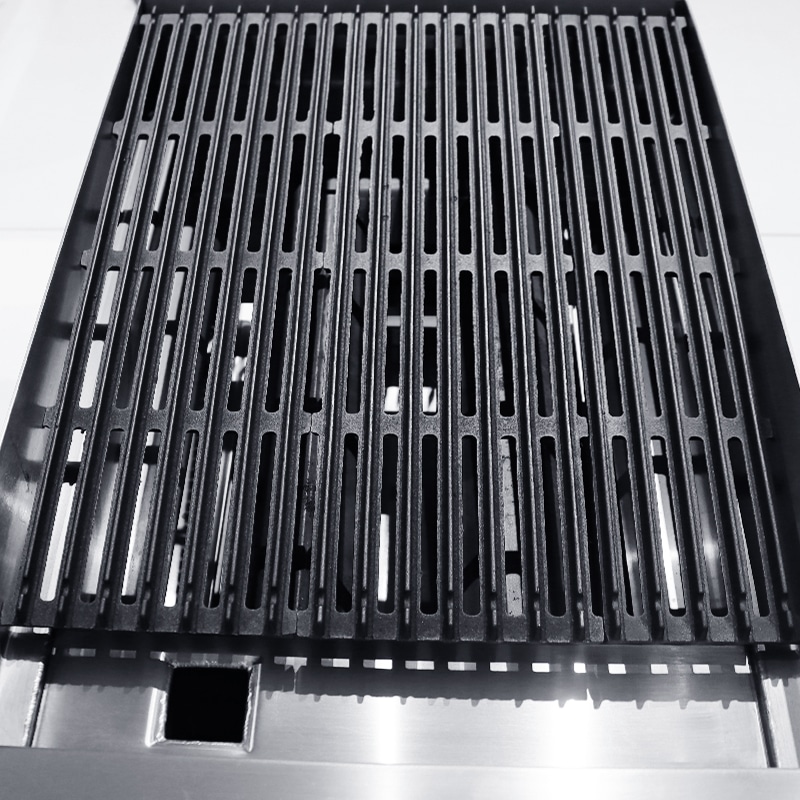
2. Cleaning the ventilation hood and ventilation ducts
If you use a vertical teppanyaki commercial griddle with its own exhaust design, in addition to cleaning the panel, you need to clean the air hood and screen at the end of each day of use, and regularly clean to ensure that the ventilation ducts are clear.

























